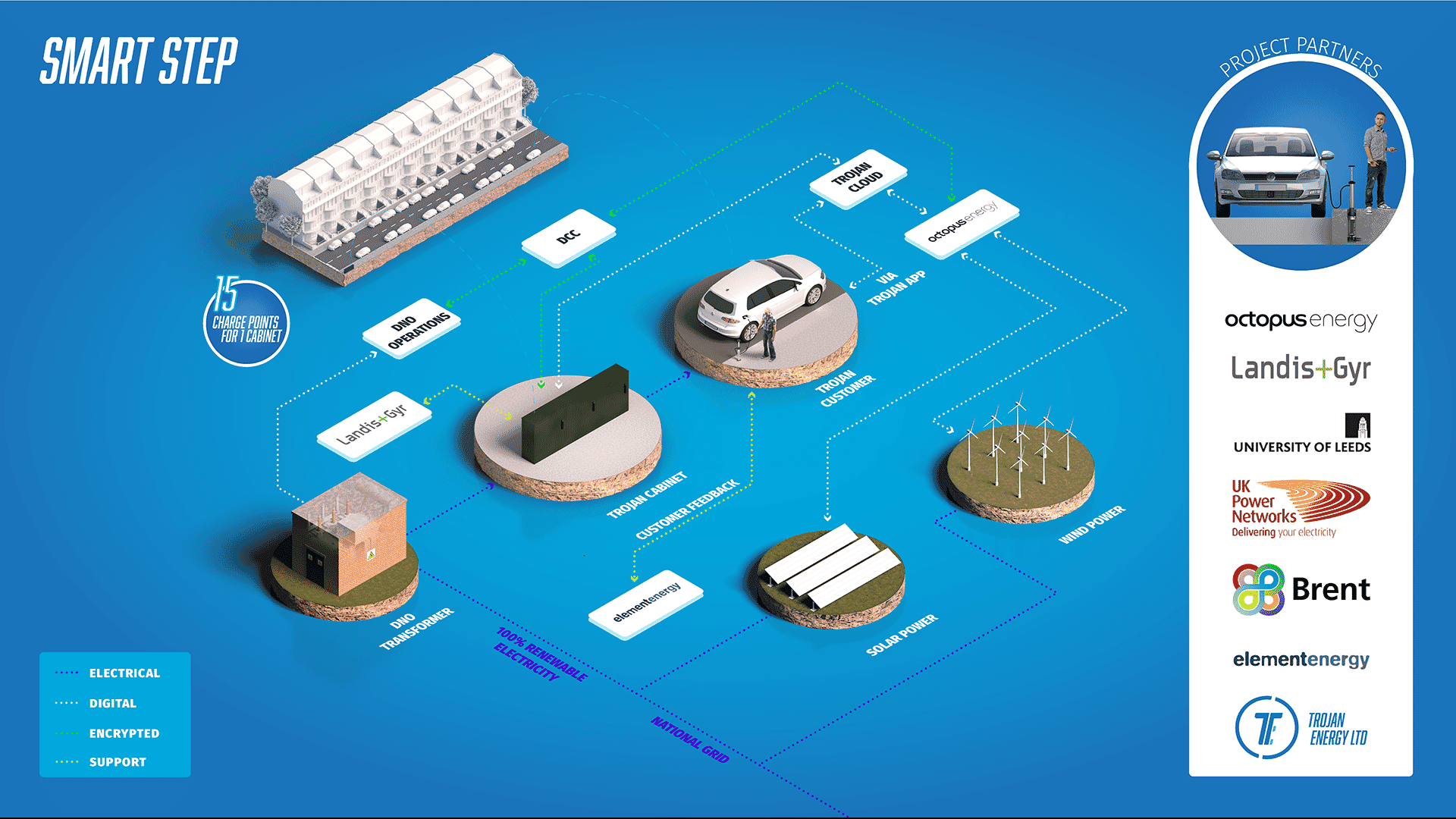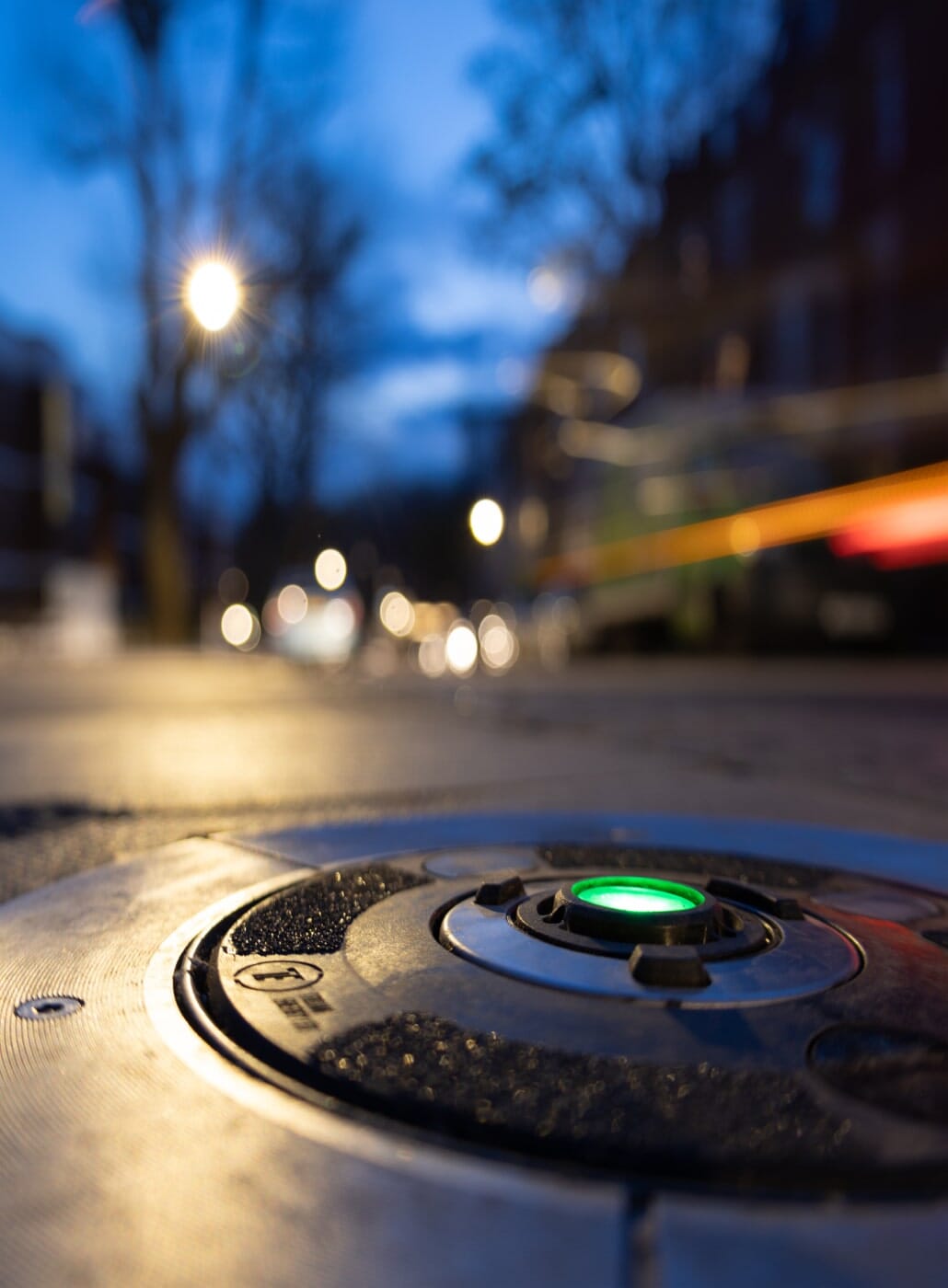4 minute Read
A smarter way to charge?
Written By: Hugh Mackenzie
First Published: (Last Updated: )

What makes charging truly Smart? Allowing EV owners to choose when to charge or giving electricity network operators the ability to control charging at times of grid stress? Or both?
The most common use of Smart charging allows users to charge automatically at off-peak times, usually on a cheaper tariff. This is a great way of reducing costs for EV owners, reduces peaks in national grid demand, and reduces curtailment, e.g. switching off wind turbines overnight when demand falls. Many home chargers now offer smart charging options but they do not offer the sophistication and interconnectivity required to provide a resilient grid as EV adoption becomes mainstream.
Currently anyone with a driveway can install a 7kW charger, and on street 7kW or 22kW fast chargers are connected up to the local grid without much concern about the overall local grid capacity. This is because at this stage in the transition there is generally spare capacity in the local grid. However, in a few years, as EV adoption accelerates, the risk to the grid will rapidly grow. Charging will have to be “smartened” through peak periods to reduce grid stress and smooth out peaks in local and national grid demands. Better interconnectivity with National Grid, DNOs, and energy providers will be crucial, and working together we can ensure charging points maximise the use of existing infrastructure without costly upgrades.
Trojan Energy are building technology for a future where there isn’t just one or two charge points at the end of your street, but potentially 30 or even 45, 22kW capable fast chargers. This will allow everyone parking on the street reliable access to fast charging. The potential to draw this much power from the local grid has serious implications for capacity of the infrastructure at a local level. This would traditionally require costly upgrades and re-enforcement, but Smart charging will help significantly reduce this problem by spreading the demand from consumers. However, to be resilient industry and government require, a secure and robust method of load shedding based on automatic requests from the National grid, local electricity network operator (DNO) and power companies.
This will allow any of these three bodies to request throttling of charging speeds, or even a stop to charging for short periods in expectational scenarios to allow an extreme peak in demand at a local or national level to pass. The load shedding request must be made through a highly secure channel so that our crucial national infrastructure (local LV transformers etc) cannot be damaged due to cyber-attack. The GCHQ designed DCC coms system for Smart meters was established as the optimum method for achieving this security and reliability and therefore Smart meters incorporated into on-street charging will become the secure solution for installing hundreds of thousands of chargers required for the UK vehicle fleet to be electrified.

Trojan Energy are proud to say that working alongside our partners at Landis & Gyr, Octopus Energy, UKPN, Brent Council and Element Energy we have developed and are now exhaustively testing our first on street SmartSTEP cabinet capable of supplying 15 charge points, allowing for DCC load shedding requests.
The system provides the smart charging capabilities required by consumers in addition to the interconnectivity required by the grid. It also provides consumers with control over their charging experience, for example if a request is made to lower local demand, the system will comply but where possible allow customers to override this via a boost option on their smart phone at higher cost.
Customers will always be up to date with the latest information on their charging status via the smart phone interface. The system will be tested in Brent in Q4 this year and if successful will be fully integrated into our future plans. This technology will enable large scale deployment of on street chargers with protection for the local and national grid built into the system, preventing blackouts even when the majority are driving EVs.
This isn’t just about grid resilience though, customers benefit too, by using Smart meters we can offer alternative tariffs options that allow users to save money, such as an Octopus Agile tracking Tariff, where customers can choose to stop charging above a certain rate at peak time (usually between 4pm and 7pm), reducing their overall charging cost.
Even services like out Virtual Driveway that enables users with high mileage to pay a subscription for access to the Trojan system then the electricity cost is simply added to their Octopus Energy home bill as if the charger was on their driveway. This enables them to use cheaper home electricity tariffs like Octopus GO (5p/kWhr for 4 hours every night), without the need for a driveway.
In conclusion “not all smart charging is equal, some are more equal than others”, truly Smart means chargers that are interconnected and ready for a 100% EV world. Our systems are designed to allow everyone to benefit from the zero carbon transition but without the need for costly upgrades to our electricity infrastructure to do so.
